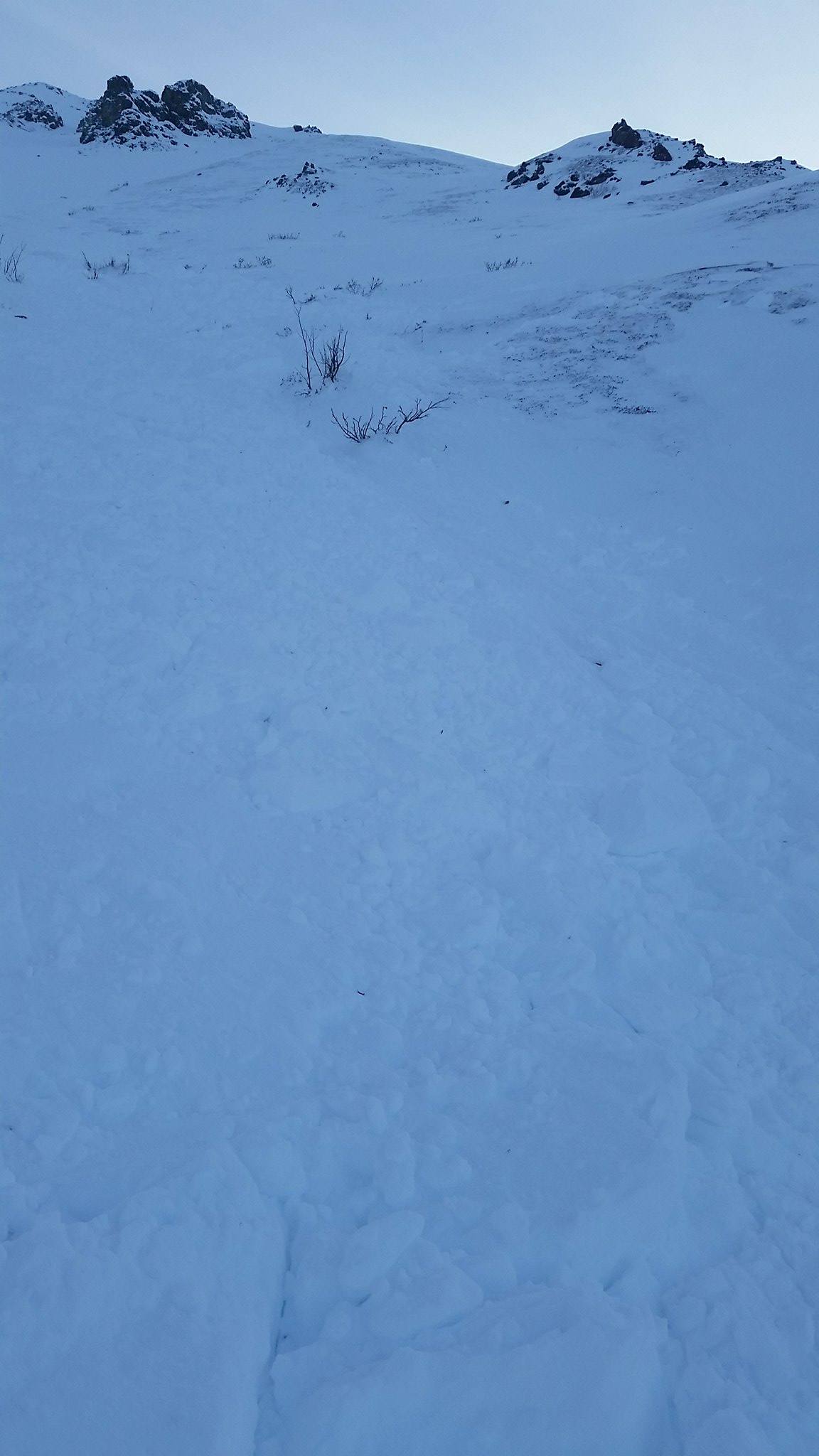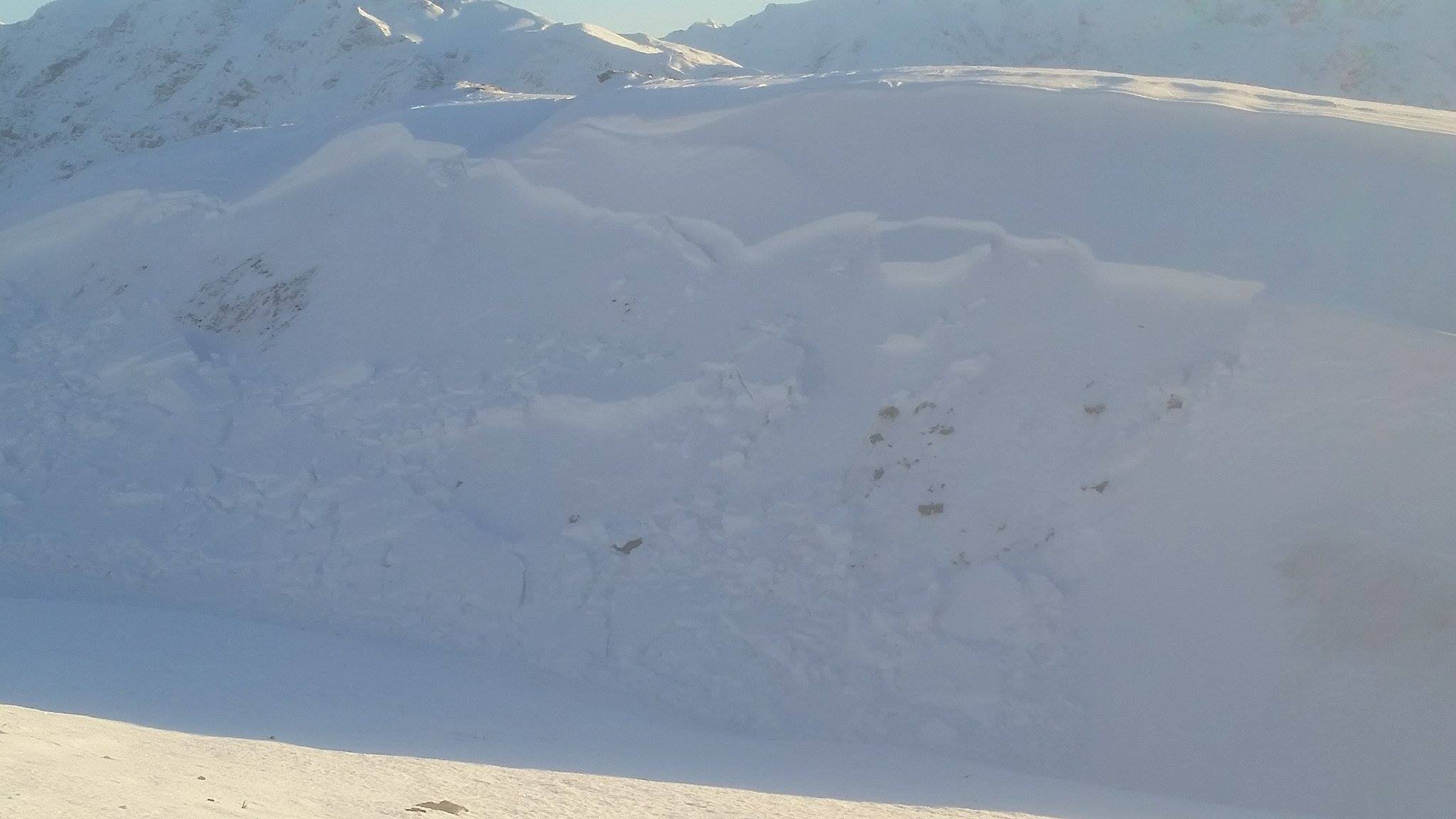It may seem like backcountry skiing is all fun and games, but there is a rather large element of risk involved, primarily with avalanche danger. Avalanches claim the lives of dozens of backcountry adventurers every year, and nobody should even take the risk if they don't know at least the basics of avalanche safety and how to avoid them. In my own experience I have seen avalanches where there should not have been any and have also seen no avalanches where they absolutely should have been, so even the most learned and experienced skier must always consider the random possibility. Even if the conditions are stable, always have an escape route on your line.
 There are several
things to take into consideration regarding avalanche
conditions. The first and easiest thing to look at is the
angle of the slope. A slope with an angle between 30 and 50
degrees poses the greatest threat. Below 30 degrees the risk
decreases significantly. These low angles result in a lower
gravitational force on the snow which makes it less likely
to slide. Above 50 degrees is just the opposite. Gravity
causes a significant force on these slopes which leads to
them being what is known as self-regulating. Basically
speaking, when the snow falls it automatically settles into
its most stable state, and avalanches tend to occur right
away as opposed to being triggered by other things. However,
skiing a slope at an angle greater than 50 degrees has
plenty of other risk factors, and should not even be
considered by a beginner.
There are several
things to take into consideration regarding avalanche
conditions. The first and easiest thing to look at is the
angle of the slope. A slope with an angle between 30 and 50
degrees poses the greatest threat. Below 30 degrees the risk
decreases significantly. These low angles result in a lower
gravitational force on the snow which makes it less likely
to slide. Above 50 degrees is just the opposite. Gravity
causes a significant force on these slopes which leads to
them being what is known as self-regulating. Basically
speaking, when the snow falls it automatically settles into
its most stable state, and avalanches tend to occur right
away as opposed to being triggered by other things. However,
skiing a slope at an angle greater than 50 degrees has
plenty of other risk factors, and should not even be
considered by a beginner. In the danger zone between 30 and 50 degrees, the slope is not quite steep enough to be self-regulating, but not low-angle enough to prevent sliding. The snow typically will rest where it falls and set up into different layers, just waiting for a skier to come along and trigger it. But angle alone isn't the only factor in avalanche conditions. Snow conditions and layers are possibly the greatest factor in avalanche safety.
If you've ever heard somebody talk at all about avalanches, you've probably heard the word slab used. Slab is a backcountry skiers worst nightmare, and puts the deadly factor into avalanches. Being buried in slough is bad, but as long as your buddies dig you out in time you can survive. If you get buried in slab you're most likely to die outright from trauma, and if that doesn't get you, slab is infinitely more difficult to dig through. What slab is is basically just a thick, dense layer of snow that is heavily bonded together. It is called slab because it breaks into large chunks when it gives. You can see it demonstrated in the picture to the left. Slab can form under a number of different conditions. The one on the left was formed from wind depositing and compacting snow on the north face of the slope. Beneath that was frozen tundra, which has a very low coefficient of friction. A single cut across the top of the slope was enough to break about 500 feet of slab loose which then carried about 2000 feet down the mountain, taking out everything in its path. As I said before, always have an escape route! It saved my life that day.
 Another
dangerous condition is a slope with a lot of brush on it.
You might think that the brush would cause improved
stability, but what typically happens is that it traps
large pockets of air beneath the snow. It doesn't take
much for the snow above it to collapse under the weight of
slab and maybe a skier or two. While slab is certainly the
deadliest snow condition, slough, pronounced "sluff," can
also be a concern.
Another
dangerous condition is a slope with a lot of brush on it.
You might think that the brush would cause improved
stability, but what typically happens is that it traps
large pockets of air beneath the snow. It doesn't take
much for the snow above it to collapse under the weight of
slab and maybe a skier or two. While slab is certainly the
deadliest snow condition, slough, pronounced "sluff," can
also be a concern.Slough is pretty simple to describe. It is just what you expect snow to be like, deep, soft and fluffy! While this is the most fun to ski in, it can also add a large risk element on steeper slopes. Slough avalanches are generally pretty harmless, but they can often trigger larger slab avalanches, and if they build up enough steam they can even take out and bury a skier.
Avalanche danger is the biggest thing to take into consideration anytime you venture into the backcountry. It is best to always have at least a basic avalanche safety kit including a beacon, probe and shovel, and always go out with a group. There are many classes and workshops to teach you everything about avalanches from the basics all the way up to advanced snow science, as well as online resources that provide information on different techniques for testing the snow conditions.
Home Page
Gear Overview
Starting out: The Approach
At the Base: The Ascent
At the Summit: The Descent
Bibliography